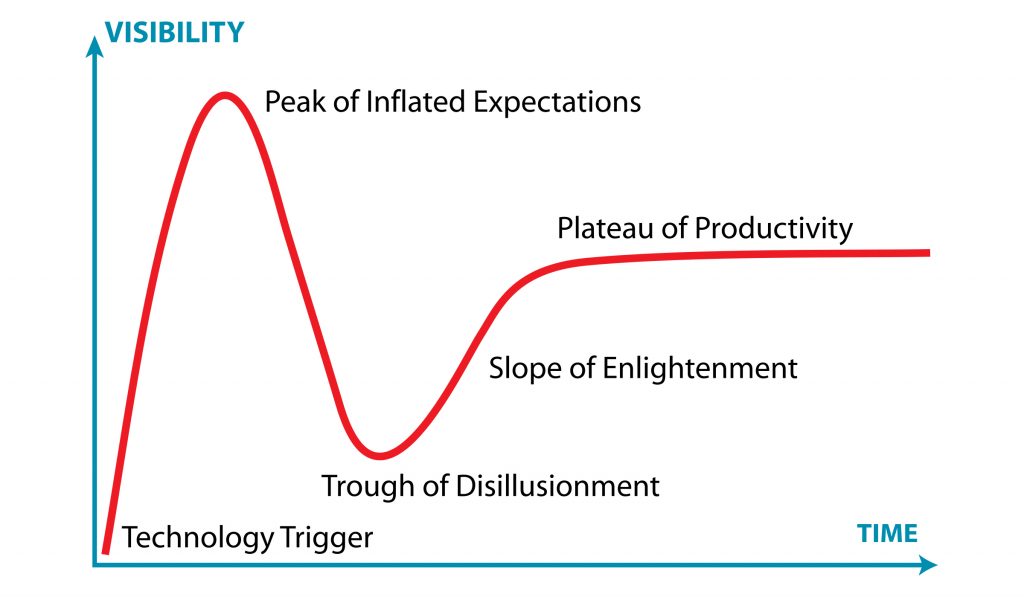A Version of this post was published by Immerse, and is used here with permission.
IDFA DocLab, a premier showcase for interactive documentary, wound up another extraordinary event in mid-November, at the International Documentary Festival at Amsterdam. DocLab positions itself as a harbinger of artistic and technological trends in interactive documentary. This year it held a showcase of current projects attracting the attention of programmer Caspar Sonnen and his team, an annual conference, and a session on interactive preservation.
Dark themes, powerful platforms.

A film still from Greenland Melting
Alarm and foreboding was notable among interactive projects. Limbo is a journey inside the nightmarish fear of an anonymous, generic asylum seeker. Greenland Melting was FRONTLINE’s contribution to alarm and action on climate change; you could take a high-tech VR trip to Greenland to watch the glaciers disappear before our eyes. The VR experience ends with a scientist talking about how his scientific work is an inadequate response to the urgency of the crisis, but all he can do. It’s a powerful and terrifying encounter with the future, and a discreet but implicit call to action. Poppy Interactive, a Dutch work that reflects on years of Middle East reporting to terrifyingly connect the dots—literally—between war, terrorism, and trade in drugs and guns. Visit it online, and get an x-ray of today’s headlines. This is journalism adding up to a bigger picture over the years.
Interactive artists concerned with social change continue to look for look for new ways to engage users and potential publics. Michèle Stephenson and Joe Brewster (American Promise) are working on VR of the long and ongoing American experience of racial terror, using Bryan Stevenson’s words: “Slavery never ended, it has just evolved.” They pitched to great interest at the IDFA Forum, which has recently included interactive projects. The Forum, grandmother of the now-common pitching event, is still a premier destination. Its inclusion of cross-platform media projects is a signal of their mainstream status.
The DocLab interactive conference used the well-known graphic of technological evolution to probe participants’ mood.

The Gartner Hype Cycle
Most thought they were struggling up from the trough of disillusionment, with a hangover, on the slope of enlightenment. But along with enlightenment comes obsolescence. Ingrid Kopp cried out at one point, “It’s discouraging to be told 360 is over when I’m still trying to figure out how to make it work, in South Africa!” She received scant sympathy, but with good humor.
Analog, of course.
Apparently one way to escape disillusion in digital interactivity is to return to analog. Lauren McCarthy uses the Internet of Things in her home to give guests a remote experience of her high-touch help waking them up. (She won an award.) Comedian Micha Wertheim experimented with phoning his public performance in via robot, and found out that in-person is better. Old-fashioned IRL experience–walking around outdoors–was a key component of two interactive projects where an audio guide led users on an experience of fake news and of personal mapmaking.
In a keynote presentation, data artist Jonathan Harris also struck an analog note. He gave a whirlwind tour of his career, which has involved a search for the meaning of life in places like the Internet. He described himself as “choreographing data,” and “looking for omens, following signs.” He has now decided that our bodies actually provide us naturally with virtual reality, and that life is the medium for art. He encouraged everyone to go outdoors.
Memory—oh, that.
Interactive documentary is now old enough to worry about its future. At IDFA DocLab’s Interactive Preservation meeting, which referenced last May’s Update or Die conference, experts including Netherlands Institute for Sound and Vision’s Erwin Verbruggen noted that interactive’s early generations have rarely been preserved at all. Indeed, VR currently is so difficult even to imagine being preserved it might not be a good candidate as archivists try to decide what to rescue.
Deciding on preservation priorities was the big challenge of the group’s meeting. IDFA DocLab has already created a “canon” by identifying memorable interactive projects from its previous showcases. Participants did not, however, find in one morning a common set of values around which priorities could form.
What’s It All For?
What’s interactive for, anyway? Chinese artist Qi Zhao noted that in China there is little interest in projects that don’t draw tens of millions of viewers, and art projects in the area aren’t encouraged. So financing of VR or AR there is linked to practical concerns. His The Cave takes viewers inside a rarely-seen Chinese cave where ancient Buddhist art decorates the walls. It was indeed an engaging and satisfying touristic experience.
Lack of evidence and serious problems with accessibility (headsets! bandwidth!) are eating away at the promises of VR as an “empathy machine.” Interactive projects all suffer variously from the practical challenges of interactivity. For instance, Bury Me, My Love could be a wrenching experience of the separation and anxiety when only one member of a couple manages to flee crisis, but it works only if the user can live with real-time delays of (pre-programmed) texting.
South African legal activist Nurina Ally asked a pointed question about documentaries that was relevant in the interactive environment as well: “How do we move beyond empathy to build solidarity?”
